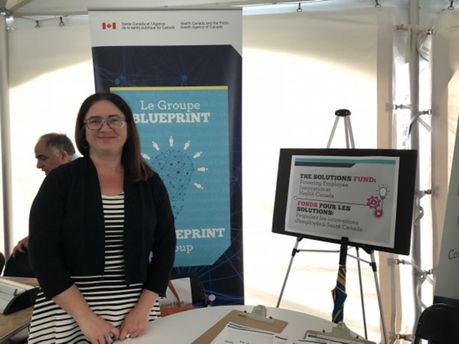The Solutions Fund: Powering Employee Innovation and Experimentation
Innovation in government? It's not all empty talk.
Health Canada is enabling employee-led experimentation with a new initiative called the Solutions Fund, which gives employees the opportunity to lead projects designed to make the Department more efficient and better serve Canadians.
In their proposals, employees pinpoint obstacles to their work and put forth possible solutions to test on a small scale. Subject-matter and technical experts review the submissions and provide input to a panel of judges who recommend to the Deputy Minister which proposals are innovative, show strong potential for scaling-up, and should be funded.
"We're investing in well thought-out proposals that show promise to make the organization more efficient or our service to Canadians better," says Health Canada's Deputy Minister Simon Kennedy, calling the Solutions Fund a first within Health Canada to invite experimentation ideas from frontline employees.
"We have a lot of very talented people in the organization—highly skilled, highly educated people who are close to the action, providing services to Canadians," Kennedy says. "They have visibility on things that could work better or be improved."
Employees are required to create a comprehensive business plan on why their idea could work. The Deputy Minister explains that the review process is rigorous and that not every idea is funded; however, he reminds us that innovation and experimentation require taking calculated risks, too.

Health Canada's Deputy Minister Simon Kennedy sees the Solutions Fund as an important way to encourage employee-led innovation, with the aim of improving services to Canadians.
"If we're going to be really risk-averse, we're not going to do things differently," he notes. "Not every experiment is a waste just because it doesn't produce the result you thought it was going to produce."
Health Canada's Solutions Fund is, in part, a response to a governmental directive for experimentation.
The directive called for the "federal government to innovate and find new ways to address persistent problems that traditional approaches have failed to solve."
"Experimental government is the direction for the future," says Cathy Bennett, who manages the Solutions Fund. "This is not a fad. This is a global shift."
Bennett, whose team designed the program, says that testing different solutions to a problem helps gather data to make more informed decisions.
"We're actually taking fewer risks this way because we look at how a solution performs before we decide to implement it on a large scale," Bennett says, adding that this can be cost-effective and one of the reasons for a shift towards an experimental government over the last couple of years.
The Solutions Fund is open to all Health Canada employees, from administrators to scientists to policy-makers and communicators, regardless of their role or level.
Her team supports employees throughout the Solutions Fund process. They connect applicants with tools and coaches so they can develop the strongest proposals possible.
"As public servants, we serve the population," says Bennett. "Anything that touches your life is handled by a government in some way at some level. We come up with a lot of solutions, policies, programs and ways to administer our services."
"It's the role of the public service to do the best we can and to provide the best services. That's what we're trying to do through the Solutions Fund," she adds.

Cathy Bennett, the manager of the Solutions Fund, is part of the team that works with employees to flesh out their proposals.
Projects funded by the Solutions Fund
The Solutions Fund was launched in May 2018. So far, there have been three rounds of proposal intake. According to Cathy Bennett, manager of the Solutions Fund, "the projects are smart and show critical thinking."
The successful projects to date are:
- Project Cyclops, a surveillance application that monitors health product labels;
- A systematic review process enhanced by artificial intelligence to improve health risk assessments;
- Project Cipher, an experiment that involves artificial intelligence and machine learning;
- Project Hummingbird, which explores the use of drone technology for inspections; and
- Rapid identification of visible impurity by Fourier-transform infrared (FTIR) spectroscopy, a method that supports inspectors of health products and cannabis.